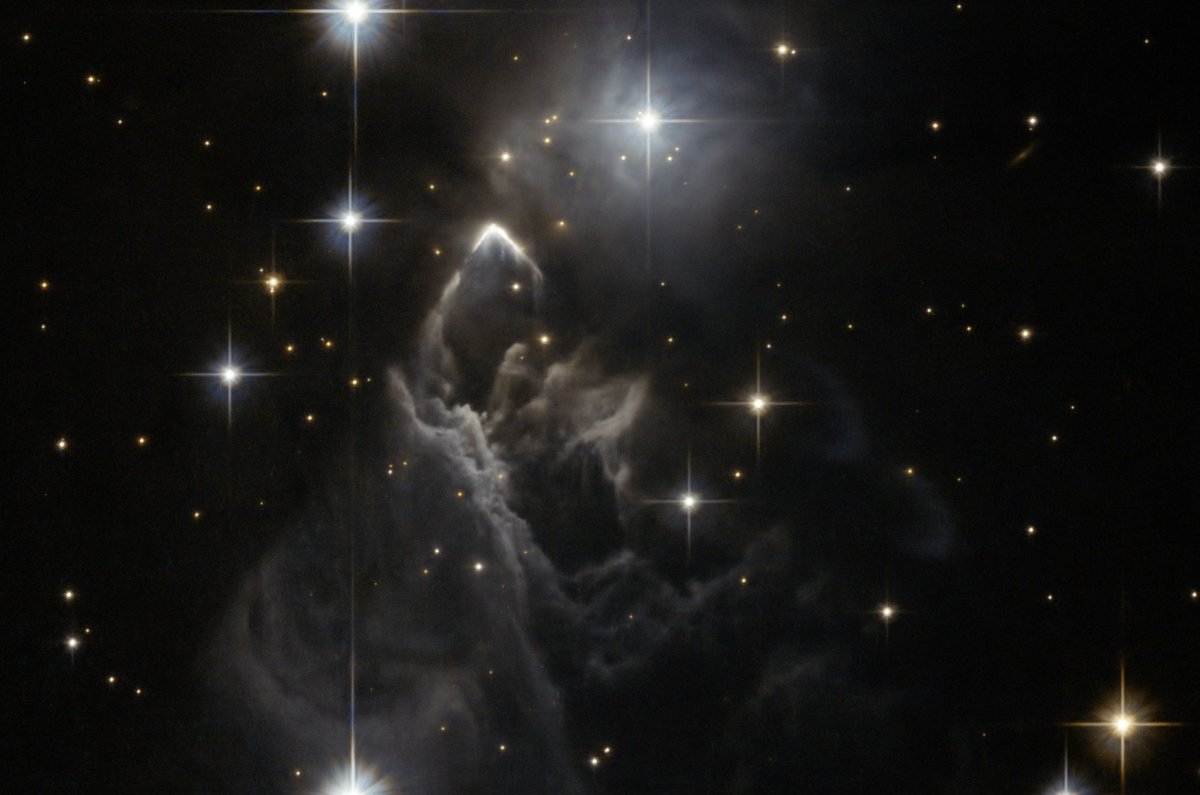NASA has released a spectacular image captured by the Hubble Space Telescope that shows a little-known nebula—a vast interstellar cloud of dust and gas—called IRAS 05437+2502 set against a background of bright stars.
The nebula, which is located in the constellation Taurus (the Bull) close to the central plane of the Milky Way, has not been studied in great detail. Much about its nature remains a mystery, although this image will help scientists to learn more about it.
Some nebulae are generated by the gas and dust expelled by the explosions of stars at the end of their lifecycles, known as supernovae, while others form from the gas that is already present in the interstellar medium—the space between stars.
Nebulae, some of which are hundreds of light-years in diameter, are often regions of star formation—hence why they are referred to as "stellar nurseries." The dust and gases—mostly hydrogen and helium—in nebulae can gradually clump together over millions of years due to the effects of gravity.
As these clumps become bigger and bigger, the gravity within them becomes stronger, until they collapse in on themselves. This causes material at the center of the clump to heat up, producing the core of a new star.
IRAS 05437+2502 has a mysterious, crescent-shaped feature, which can be seen in the bottom left of the image. This crescent may have resulted from a high-velocity young star being ejected from a star-forming region at more than 120,000 miles per hour.
The nebula was discovered in 1983 by the Infrared Astronomical Satellite (IRAS)—the first-ever space telescope, operated by the U.S., the Netherlands and the U.K., to perform a survey of the entire night sky at infrared wavelengths.

The newly revealed picture was created using images taken through yellow and near-infrared wavelengths with the Wide Field Channel of the Advanced Camera for Surveys on Hubble. The images were captured as a part of a "snapshot survey"—observations that take place in-between Hubble's normal scheduled operations.
Hubble, which is jointly operated by NASA and the European Space Agency, was launched in 1990 and, since then has been responsible for producing some of the most dramatic images of our universe. While not the first space observatory to be launched, it is one of the largest and most versatile.
Uncommon Knowledge
Newsweek is committed to challenging conventional wisdom and finding connections in the search for common ground.
Newsweek is committed to challenging conventional wisdom and finding connections in the search for common ground.
About the writer
Aristos is a Newsweek science reporter with the London, U.K., bureau. He reports on science and health topics, including; animal, ... Read more
To read how Newsweek uses AI as a newsroom tool, Click here.








